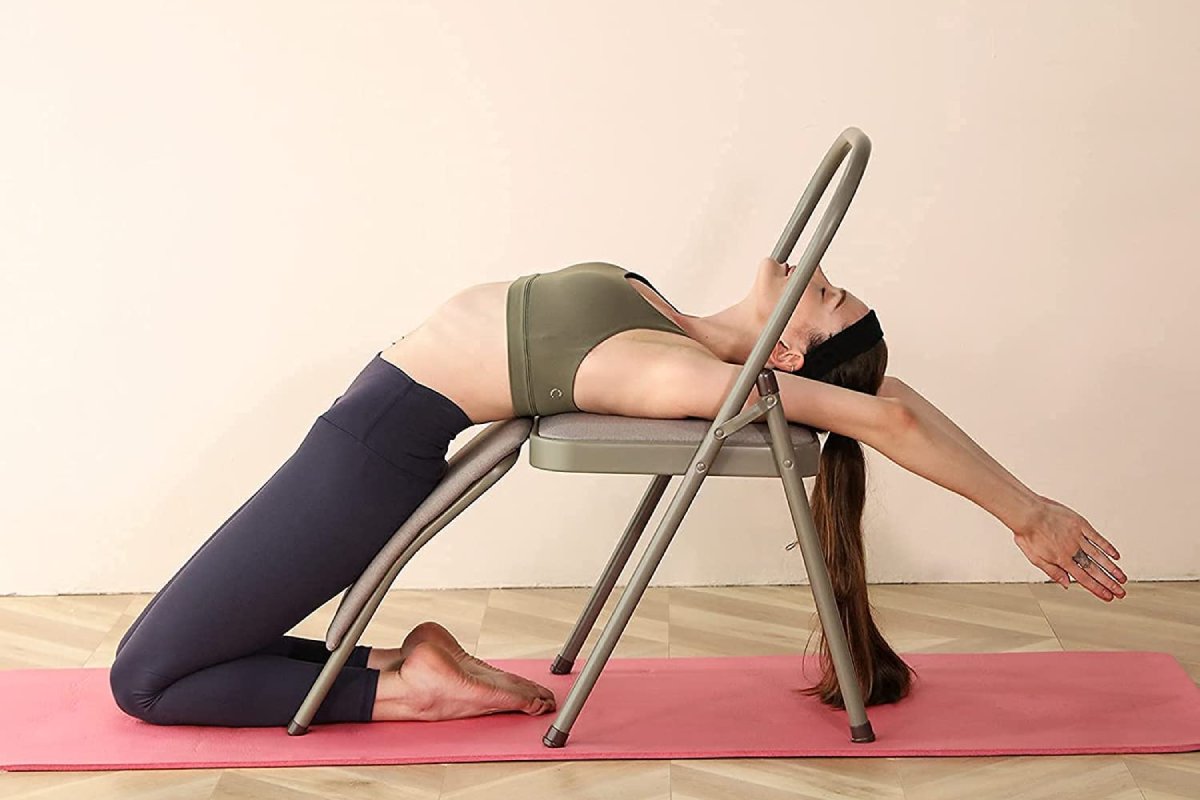How to Practice Dream Yoga
When you develop lucidity in your dreams, you develop lucidity in your life. Tenzin Wangyal Rinpoche on the practice of dream yoga. The post How to Practice Dream Yoga appeared first on Lions Roar.

When you develop lucidity in your dreams, you develop lucidity in your life. Tenzin Wangyal Rinpoche on the practice of dream yoga.

Art by yomagick
We spend roughly a third of our lives sleeping. Every night we dream, although we may not remember those dreams. And our waking life, too, is filled with dreams. They’re woven into the narratives of our moving minds as fantasies, projections, images, and thoughts of the past and future.
Dream yoga is a body of teachings and practices taught in the Bön and Buddhist tantric traditions of Tibet. The goal is to wake up. To wake to the clear awareness that is our fundamental nature.
The practice spans the full cycle of day and night. Lucid dreaming—recognizing you’re dreaming while remaining in the dreams of the night—is the best-known feature of dream yoga. But waking up amid the dreams of the day is equally important. Developing lucidity during the day leads to lucidity in the night. And developing lucidity in the night leads to lucidity during the day.
The benefits of the practice can appear long before a first lucid dream, and continue all the way along the path. Bringing more awareness to your present experience makes life more vivid. Presence is stronger and each moment is fresh. There’s greater freedom because, with increased awareness, you can choose to respond to experience positively and intentionally, rather than reacting from conditioning. There’s more beauty, peace, and joy.
Lucid dreaming is the best-known feature of dream yoga, but waking up amid the dreams of the day is equally important.
Most importantly, the practices of dream yoga support the recognition of, and ability to abide in, the nature of mind: clear, empty awareness. This fundamental nature is also known as buddhanature, the unity of emptiness and clarity, and nondual awareness. All experiences and experiencers arise in this empty clarity. When you recognize this awareness directly, experientially, you know the nature of mind. Through practice you become familiar with it. Abiding in it is realization.
The essence of dream yoga practice is to continually remain present in this awareness. But this is very difficult. Most of us need practices that provide a path. Below is an outline of some of the practices of dream yoga.
Calm Abiding
A basic requirement for any meditation practice is the ability to focus. You needn’t have extraordinary concentration, but to recognize the dream and wake in it, you have to be stable enough to avoid becoming lost in distraction.
Focusing on an object is a simple practice you can do to help stabilize the mind. The object of your focus can be the breath, a visual object, sounds, or sensations. Even a few minutes of practice, if done regularly and often through the day, strengthens concentration and helps to quiet and focus the mind. Over time, it’s helpful to practice for longer sessions. This lays the ground for, and benefits, all other practices.
The four foundational practices are practices of the day. Often translated as “preliminary” practices, these are actually the essential practices. The method is always the same—increasingly rest in clear awareness—but each of the four brings the practice to a different situation.
1. Change the Karmic Traces
During all sensory and mental experience, try to remain in vivid, open awareness of the present moment. Practice this as much as possible over the course of the day, or you can choose to practice strongly for short periods—a few minutes at your desk, the time it takes to walk a block, while you wash dishes, etc. You will be distracted again and again. When you notice your attention has strayed, return to clear awareness. Determine to visit the practice ten or twenty times each day, or as much as you can.
Frequently check to see if you are in a dream. Ask yourself, “Is this a dream?” Make it habitual enough that you will eventually do the same in night dreams. Open your awareness to include everything you are experiencing. Ask yourself if it is a dream. Make it a real question, focus intently. Is it a dream? Experience will become more vivid and awareness will be open. With consistent practice, you’ll rest in open awareness more often and for longer periods.
2. Remove Grasping and Aversion
Recognize all you encounter and your reactions to what you encounter as the luminous phenomena of a dream.
When you notice you’re having a negative reaction to people, situations, or your own thoughts, when you want the situation to be different than it is, realize this is an opportunity to practice. Immediately relax your body and center yourself in awareness. Observe the outer situation and what arises in your mind and body. Remind yourself that what you experience is a dream, that your reactions are part of the dream, and that your grasping and aversion are actions in the dream. Recognize this with a level of conviction strong enough to leave an imprint on your mind. Become lucid.
Further the practice by developing flexibility. Let go of your habitual reactions. Choose to respond positively and with kindness even when you’re in a bad mood or have been provoked. Choose to be calm when you are stressed. And so on. This will diminish the power of conditioning, deepening your practice and increasing freedom. You can be certain you’re doing this correctly if immediately on seeing your reaction as a dream, you become more present, and desire and attachment lessen.
3. Before Bed: Strengthen Intention
Before going to sleep, review the day and the day’s practice. While centered in awareness, let memories of the day arise, particularly difficult moments to which you have reacted. Recognize those events and your reactions as memories of dreams.
As in the first two practices, truly comprehend and feel the dreamlike nature of your daytime experiences and your memories. Develop a strong intention to be lucid in the coming night’s dreams. Add a prayer to strengthen intention, such as, “May I have a lucid dream tonight. May I be aware in dream.” Put your heart into the intention.
4. In the Morning: Cultivate Memory and Joyful Effort
In the first moments of waking in the morning, review the night. Do you remember your dreams? Were you lucid? Record your dreams or write them down in a journal while they’re fresh. This will make it easier to remember dreams going forward. If you remembered a dream or became lucid in a dream, allow yourself to be happy about it. Always celebrate success in your practice.
If the practice didn’t go well, don’t feel discouraged; this is part of the path. Instead, begin the day with the strong intention to maintain the practices of the day. Reinforce your intention to become lucid, or further develop lucidity the next time you sleep. Then begin the daytime practices.

Art by yomagick
Practices of the Night: Waking Up While Asleep
It’s helpful to prepare the room where you will sleep to support your practice. The room is now for more than just sleep. It is a meditation room. Treat it as you would a practice room in a temple or retreat. Keep it clean and orderly. Perhaps create a small altar on a desk to inspire you when you enter the room. Include images of your teachers or deities, mandalas or icons that matter to you. If that doesn’t inspire you, use images that do. The beauty of nature, the night sky, people you love. Images that help you feel love, compassion, inspiration, commitment, or awe. Connect the room to your practice.
The practices of night begin as you prepare for sleep and continue through sleeping and waking periods during the night, as well as in dreams. These practices can be as demanding as you want, or as minimal as just setting your intention before sleep.
Clear your mind of the day. Calm and relax your body. Generate compassion and love. Realize you have an opportunity to become lucid this very night. Strengthen your intention.
There are four main practices of the night meant to develop lucidity. They are: abiding in peace, increasing clarity, strengthening presence, and developing fearlessness. With the support of different chakras, postures, symbols, and breathings, the practices develop, in sequence, four qualities supportive of dream yoga and daily life.
Here I describe a simplified form of the first of these four practices, bringing awareness into the central channel. Its purpose is to reconnect you to the intrinsic peace of your fundamental nature.
When you lay down for sleep, lie on your right side, if it’s comfortable for you. Breath gently. Connect with clear awareness. Relax your body again, particularly your throat.
Draw your attention to the throat chakra. Visualize, in the chakra, a deep red, luminous lotus made of light. Generate the felt experience of peace. Merge with peace. Gradually let go of images and imaginings as you allow yourself to fall asleep in peace.
If you wake for any reason during the night, turn your attention to the throat chakra. Lightly visualize the lotus and feel the peaceful, red energy of it. Merge again with peace as you fall back into sleep.
You can practice this informally during the day in addition to the four foundational practices. Anytime you have a moment, particularly when you feel anxious, agitated, or emotional, and before you express what you’re suffering, draw clear, open attention to the throat chakra. Relax the throat entirely and lightly imagine the luminous red lotus. Take a slow, deep breath, relax the body, calm the mind, and let go. Feel peace spread through your body. It only takes moments. Eventually you’ll become aware of peace naturally arising as you place your awareness in the throat chakra. Repeat this informal practice throughout the day.
Though full realization is the goal, signs along the way will encourage you. In this practice, when your dreams become peaceful, when your sleep and your days are more peaceful, these are signs of accomplishment.
Once Lucidity Is Attained
Once you are lucid in the dreams of night, there is literally no limit to what you can experience. Use this freedom to transform or remove boundaries in the mind and identity. Become a giant or a tree, a bird or the sun. Change your gender. Meet the Buddha. Become a buddha. Transform into anything you can think of, and particularly into what you think you can’t be, whether it’s a bee, a joyful person, or a mountain. Transform your negative habits into positive habits: anger into compassion, fear into strength, distraction into awareness. You can generate strong experiences of moving prana in your energy body and chakras.
Ultimately, abide in clear awareness in the dream. When you’re established in pure awareness, two more advanced yogas can be undertaken. Sleep yoga is the practice of abiding in awareness during deep sleep, and bardo practice is training to remain fully aware through the process of death.
Traditionally, dream yoga was not commonly taught in Tibet. But over many centuries, countless men and women have benefited from the practice, and it is now practiced in countries around the world.
If you start these practices, you become part of an unbroken tradition that began a very long time ago. It’s good to think of those who came before, your spiritual ancestors. They faced the same difficulties you do, the same problems and setbacks, and many found freedom in realization. Also think of those who will come after you, who will be positively influenced by your practice. There’s support in acknowledging and connecting to the tradition.
Of course, there’s more complexity to dream yoga than can be addressed in this short article, including other practices and other supports for the practices. There are practices specifically for waking periods in the night, and there is more to do once you’re lucid. So it is good to receive oral instruction from a teacher who can answer your questions and help you deal with obstacles. There are also books on dream yoga, by myself and others, that can be helpful.
If you decide to practice dream yoga, which has been very important to me personally, and to so many others, I hope it will bring you many good results.

 Fransebas
Fransebas 
































